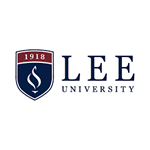Below is a summary of the abstract you submitted. Presenting author(s) is shown in bold.
If any changes need to be made, you can modify the abstract or change the authors.
You can also download a .docx version of this abstract.
If there are any problems, please email Dan at dar78@pitt.edu and he'll take care of them!
This abstract was last modified on March 21, 2023 at 3:16 p.m..

Our knowledge of phages that attack bacteria in the phylum Actinobacteria has grown exponentially over the last 15-20 years. However, there are still many genra within this phylum that warrant further investigation, one of which is Microbacterium foliorum. To isolate phages that infect M. foliorum, protcol from the Phage Discovery Guide (HHMI-SeaPhage) was followed. The novel phage Schimmels22 was isolated from Schimmels Park (35.16937 N, 84.86664 W), Cleveland, TN. Sequencing of Phage DNA (Dan Russel, University of Pittsburgh) and genomic analysis (Phamerator, Steven Cresawn) revealed a phage with a lytic life cycle in the Cluster EA, Subcluster EA11, belonging to the family Siphovirdidae. Gene location in Schimmells22 is being mapped with the use of Glimmer, Genemark and Starterator databases as well as ribosomal binding sequence information found in DNA Master software. Other annotated genomes in Subcluster EA11 include HerculesXL and Ixel. These genomes along with the software HHpred and blastp (NCBI) are currently being used to assign gene functions. Continued analysis and review of gene function will be used to identify any unique features of Schimmles22 within its cluster and subcluster.
